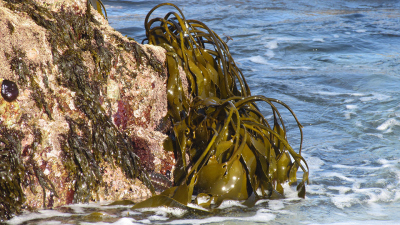- Home
- Discover
- Archive News
- News 2022
- Braunalgen
Slime for the climate, delivered by brown algae

They reveal that the algal mucus called fucoidan is particularly responsible for this carbon removal and estimate that brown algae could thus remove up to 550 million tons of carbon dioxide from the air every year – almost the amount of Germany's entire annual greenhouse gas emissions.
Brown algae are true wonder plants when it comes to absorbing carbon dioxide from the air. They even outcompete forests on land in this, and thus play a decisive role for the atmosphere and our climate. But what happens to the carbon dioxide after the algae have absorbed it? Researchers at the Max Planck Institute for Marine Microbiology now report in the Proceedings of the National Academy of Sciences (PNAS) that the brown algae can remove large amounts of carbon dioxide from the global cycle in the long term and thus can counteract global warming.

Original publication:
Hagen Buck-Wiese, Mona A. Andskog, Nguyen P. Nguyen, Margot Bligh, Eero Asmala, Silvia Vidal-Melgosa, Manuel Liebeke, Camilla Gustafsson, Jan-Hendrik Hehemann (2022): Fucoid brown algae inject fucoidan carbon into the ocean, Proceedings of the National Academy of Sciences (2022). DOI: 10.1073/pnas.2210561119.
More information:
Press release Max Planck Institute for Marine Microbiology in Bremen


